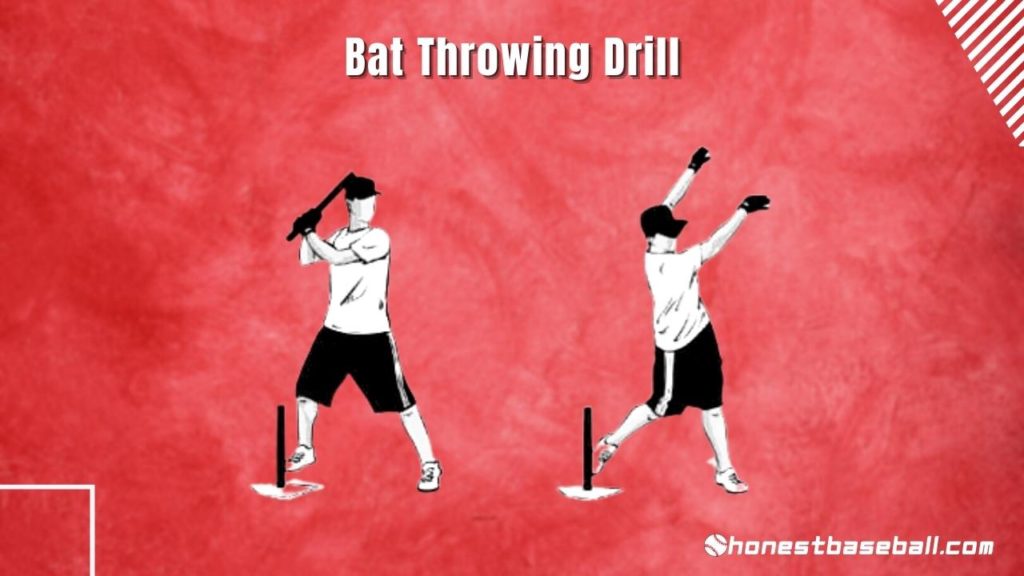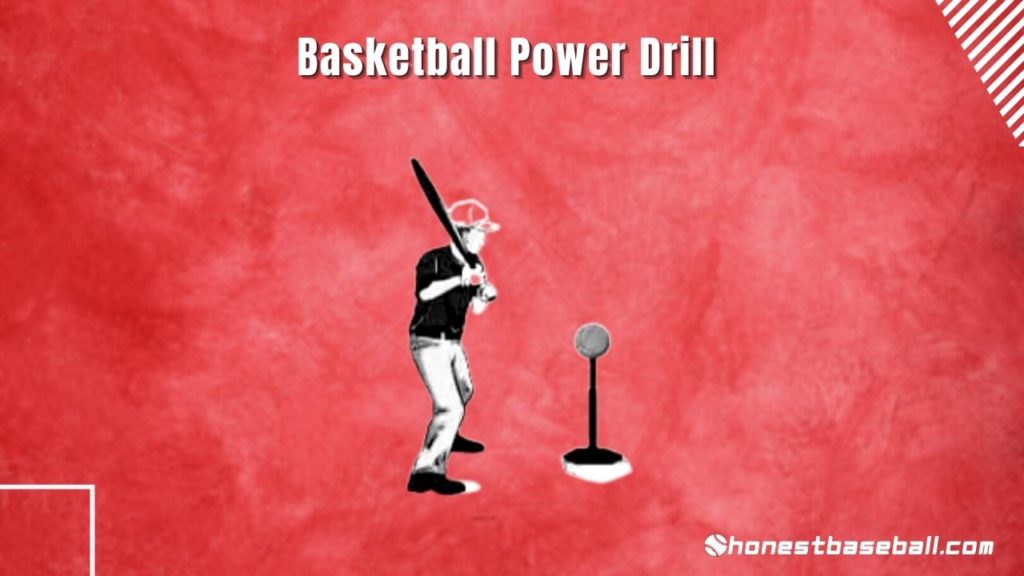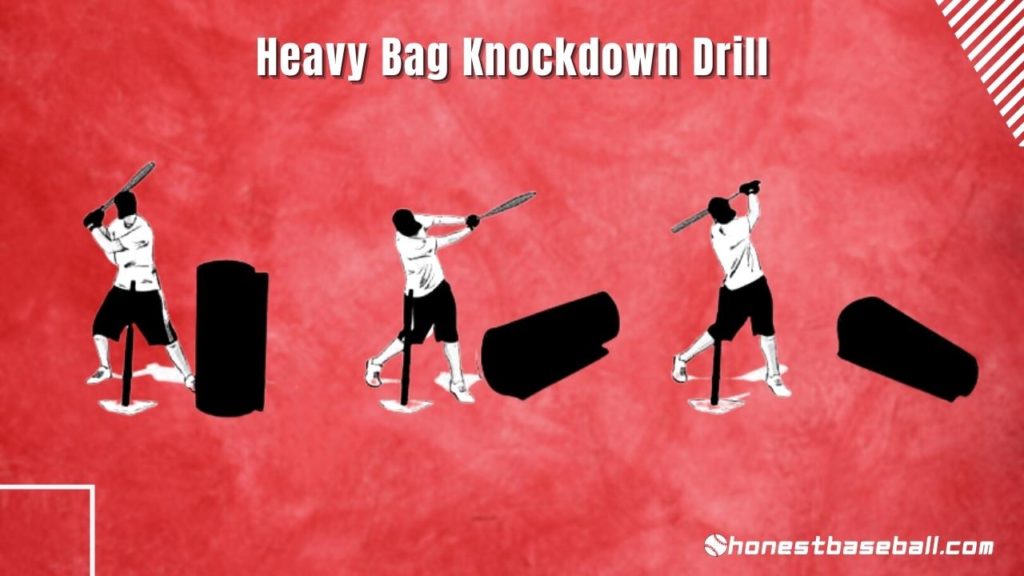Last Updated on February 7, 2023
Home runs are a holy grail for aspiring young players planning to grow their baseball career as a batter. But, what is a home run in baseball exactly?
Home run is a batted fair ball that crosses the outfield fence and sometimes stays inside the fair territory.
When you make a home run shot, you get 4-base freedom, including your support base runners. That means you can run through four bases without the fear of going out.
For any baseball hitter, a home run is a dream shot, a hit that brings a stadium full of baseball chants. Whether you’re a player or x-generation coach, this article will help you with all the essential information regarding home runs.
At first, you’ll learn different types of home runs and, later, important drills or practice plans for this play. Let’s continue with the grinding.
Top 10 Home Run Records from Major League Baseball Vault!

2 General Home Run Types in Baseball
From the early days of the baseball era, the home run was popular. Over time, hitters made some accidental improvisation. Major League Baseball then decided to differentiate home runs into two – Out of the park and inside the park home runs.
Out of the Park Home Run
Any home run that crosses the audience fence that restricts them from the baseball field is called an out-of-the-park home run in baseball. It’s also known as the outside the stadium and outside the park home run.
This home run is a spectacular play if it happens in any baseball game. The batter hits the ball with full force and should fly over the outfield fence or wall. And the audience area or over the following areas are the ball’s final destination.
In this home run, both the batter and runners get the chance to run through the four bases to score up. There is no restriction on the force out. And as the ball is out of the fielders’ zone, there is also no chance of a catch. It’s also known as moon shot.
Inside the Park Home Run
As the name suggests, in the inside the park home runs, the hit ball crosses the outfield fence and still stays in the play.
In the common scenes, the player hits a ball, and the following outfielder somehow misses the ball to catch. Then the fielder grabs the ball and throws it to the baseman to get a force out.
That means the batter or runners can run through the bases to score, but the fielders can try to throw the ball to their next base to get them out. That’s how you can achieve a typical inside the park home run.
3 Types of Home Run Based on Number of Runner
The above may sound easy to grasp by a newbie. However, baseball terminologies are a bit descriptive.
Without the area-wise home runs, you can also differentiate it depending on the run or number of the base runners (excluding the batter) present on the baseball field.
Solo Home Runs
If there is no support runner present on the bases except the batter, it’s called a solo home run. Major League baseball players also call it a solo homer or one-run homer. The home run shot taken in this case is often called a solo shot.
Two Run Hits or Homer
It’ll be considered two-run shots when a player hits a home run while having at least another base runner on the ground. Also, the offensive players should be able to score 2 scores to count it as a two-run homer.
Three Run Hits or Homer
Following the above pattern, if there are at least 2 base runners on the ground and the player hits a home run, it’s a three-run home run. In addition, they have to make 3 consecutive runs in this play.
Four Run Homer or Grand Slams
Grand slams are a little different from the above baseball runs. This one comes with a bucket of glory. Suppose you’re the batter, and your base runners are on 1st, 2nd, and 3rd bases. The fun fact is this name was taken from contract bridge (once a very popular card game)
In this scene, it’ll be considered grand slams if you can hit an inside the park home run. There is a reason why it’s called the four home runs also.
Since base runners are standing on each plate, if everyone, including you, can score a single, the total run will be 4. Therefore, it’s called four home runs.
It’s one of the toughest scores in MLB game history so far. The first one happened in the mid-50s by Roberto Clemente.
5 Home Runs Based on Situations
The home run series doesn’t end there. There are some other home runs depending on different situations in a baseball game. Let’s take a read on them.
Walk-Off Home Runs
From a former player to coach, during this long journey, if one home run occurs that I cherish the most, it’s the walk-off. Why?
Because a walk-off is the winning home run shot, the run should take place within the 9th inning of a single game, meaning the last inning.
The round tripper should hit a home run, and the score should decide a win for the offensive team. In brief, any home run that makes the required score to beat the opponent team’s score is a walk-off home run.
Major League Baseball has a maximum of 13 walk-offs in its history, which is achieved by Jim Thome. And to me, this Major League record is nearly impossible to break. It took him 22 MLB seasons to be the king of the walk-off. This decent guy scored 612 home runs in total.
Leadoff Home Runs
While walk-off decides the ending of an inning or game, leadoff is related to the beginning of home runs in one game.
In this play, the first batter in the batting order should be able to make a big fly. Because of the nature, you’ll notice leadoff takes place often in the first inning of a baseball game.
Till now, the maximum Major League record regarding the leadoff is 81. The title is conquered by one of the favorite hitters, Rickey Henderson.
Back2Back Home Runs
If 2 baseball hitters make 2 home run shots, one after another, it’s considered a back2back score. There are some flexibilities in modern back2back home runs.
There is no restriction on the pitcher’s side. If the first pitcher finishes his bowling with a home run and the next pitcher gets blown away on his first pitch by another home run, it’s still a back2back.
So far, the Major League record vault has 11 back-to-back shows. The first back2back play was listed in 1961. The batters are Eddie, Hank, Joe, and Frank, respectively, from the Braves.
As far as my findings, the recent Major League record happened in 2022 by the Cardinals. The Philadelphia Phillies were playing in the opposite. The first hit was taken by Nolan Arenado. Then Gorman (Arenado’s brother) followed up with the 2nd shot.
Consecutively, Juan Yepex and Dylan Carlson showed off their batting skills with their home runs.
Consecutive Home Runs
There are some similarities between consecutive and back-to-back home runs. The main difference is instead of two batters; there has to be a single batter who would score one after one home run to consider it a consecutive play.
According to the Major League record, the maximum number of seized home runs in this criteria is 4 in a row. Ted Williams made the maximum consecutive runs in the late 60s. He got 4 sets of this play in 4 different games.
With 3 sets of consecutive home runs, Raggie Jackson (1977) and Albert Pujols (2011) stayed in second and third position, respectively.
Home Run Cycle
You can guess it by the name. Most home run hitters often mark their batting glory with home run cycles. It’s actually a chronological blend of 1, 2, 3, and 4 (grand slams) runs.
However, you must keep this sequence to get a home run cycle. Besides, this order should be achieved in a single game.
And because of this rule, it’s not an easy title to add to your bucket. Even in Major League history, there is no single home cycle recorded ever.
Most home runs in this category occur in the lower level of baseball as the competitiveness is slightly less in those segments like college baseball.
During the last century, the only home run cycle was hit by Tyrone Horne. It was a AA minor league game in the bottom 90s.
Drills for Home Runs
A proper swing + powered by a solid hitting strength = Home runs.
That’s what I teach my students when they ask for my tips for home runs. And to develop your swing and strength, some advanced hitting drills can help a lot. Below I’ve shared a few of the must-have home run drills for baseball players.
Bat Throwing Drill

Keeping up a full swing is essential to making a smooth shot. Besides, it helps batters to avoid arm and wrist injuries. This bat-throwing drill may seem like a simple exercise at first, but you’ll change your mind after the first 5 reps.
You’ll need a broken or spare bat to perform this drill. Please don’t use a new baseball bat as this drill will damage it. You can also use pipe or rod-like stuff.
Take your “batter hitting” position on the home plate or anywhere on the baseball field as you’re batting. Following your batting stance, load a full swing and throw the bat as far as possible.
Repeat this process 10-15 times. Then take a break and get back to your position and begin again. You can start with 3 reps and gradually increase it as far as you can push it.
"You must follow the batting stance in order to avoid injuries. Also, finish the swing from beginning to end. Otherwise, this drill may ruin your hitting order."
Basketball Power Drill

When it comes to strengthening your arms and wrist, there is nothing that can beat the basketball power drill.
The drill is quite straightforward, as its name suggests. To perform this drill, stand in your batting position on the home plate.
Place your batting tee where you’re supposed to hit a home run. Then instead of a baseball, put a basketball on the top of the tee.
Now follow your regular stride and hit the ball with your maximum strength. When hitting the ball, try to hit it upward at a 45-degree angle, just like you’ll shoot for a home run.
Don’t always try to hit hard. Improvise your shots with a blend of both soft and hard toss. In that way, you can level up your strength for both infield and outfield shots.
"If possible, start with a lighter or smaller basketball and gradually shift to a heavier one. In that way, you can adapt the ball weight without causing any injury."
Heavy Bat Snap Drill

This drill is specifically designed for strength building of your wrist. Another good part of this drill is that you can practice it at home despite it being a home run drill. To begin the exercise, stand on the home plate, following your hitting position with your bat.
But instead of holding the bat in alignment with your back shoulder (as you hold it during batting), keep it in a straight line, matching the middle of your chest. Follow the image for a better understanding.
Keep the bat at a 30-degree angle. It should look like you’re laying the bat in the air. You’ll feel the tension in your wrist when you hold the bat in that posture. Try to scratch as far as possible.
Then turn the bat towards your head without moving the hand position. You should only move the wrist. Next, shift the wrist and bat back to the ideal position. And then repeat to the head.
Be careful not to hurt your head with the bat. Remember, there is no need for speed here. Do it slowly but do it more. Complete 10-15 reps every time.
Heavy Bag Knockdown Drill

Another good exercise for simultaneously improving your swing and strength is this knockdown drill. It’s both an indoor and outdoor-friendly drill.
Though the name says you need a bag, you can practice this drill with any weighty object that feels similar.
Place your hitting tee and a hefty bag in a vertical line, keeping a slight distance between both objects. The distance should be in such a way that when you finish a full swing, you hit the tee and the bag, respectively. However, you don’t need to hit the batting tee.
Put yourself in the batting position. Make a full swing shot over to hit the bag. Remember, you should fly the bat over the tee but don’t touch it. Hit the bag with your maximum force so that you can knock it down to the ground. That’s it.
Frequently Asked Questions
How long is a home run in baseball?
There is no particular dimension restriction for home runs. And you can’t estimate a single distance based on the baseball field acres as there are both outsides and inside the park home runs.
However, in 2019, the average length of home runs was 463 feet. The statistic was estimated based on 50 home runs at that time.
What’s the difference between a run and a home run?
Both runs and home runs are actually the same and complement each other. Run is any score or point made by the offensive players.
And it’s not limited to the home run hitters. The base runners can also score. These common scores can be a single, double, or triple, sometimes depending on the number of base runners supporting the batter.
On the contrary, home runs are part of the runs. And these can also be single, double, or triple, depending on the home run types. For a better understanding of the home runs, read the above sections.
Is a home run 2 points?
Not all home runs get you 2 points. If the batter hits a home run and there is another runner supporting, you can seize a 2-point home run.
Who has the longest home run ever?
It’s Joey Meya who hit the longest home run in AAA Minor League Baseball game history with a distance of 582 feet. The game took place in the late 80s. He was batting on the Denver Zephyrs’ side.
What is another name for a home run?
People call home runs with twelve different names sometimes. These are:
- Grand tour
- Bell ringer
- Circuit clout
- Round trip
- Mark
- 4-base hit
- Grand slams
- Four bagger
- Bull’s eye
- Homer
- Looper
Wrapping Up
In conclusion, the answer to “what is a home run in baseball” is it’s a batted shot that can take place either outfield, over the fence/auditorium where the batter and runners can score 1, 2, 3, or 4 runs.
In addition, in out-of-the-park home runs, the hitter gets the freedom to score points without worrying about getting out. However, if it’s an inside-the-park home run, the pitching team can try to put him or the runners out of the game.
Check out interesting facts of baseball:
How Many Baseballs Are Used In A Game? Surprising Facts!
Why Is The American Flag Backwards On Baseball Uniforms? Explained
Why Do Baseball Players Wear Chains? Fancy Or Else

Hello everyone. My name is Jason Butler, and I live in California, America. I was a professional AAA Minor League Baseball player. I lost my chance of playing MLB for injury issues, but I did not lose my love for baseball. I attended the coaching training program and am now working as a coach in a small school in San Diego.
I always love to share my experience and knowledge if that can help you. Play baseball, and stay fit.
